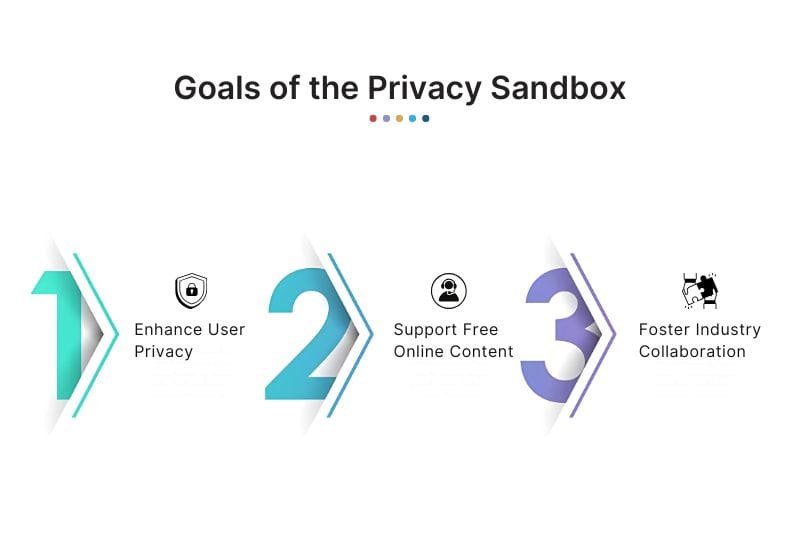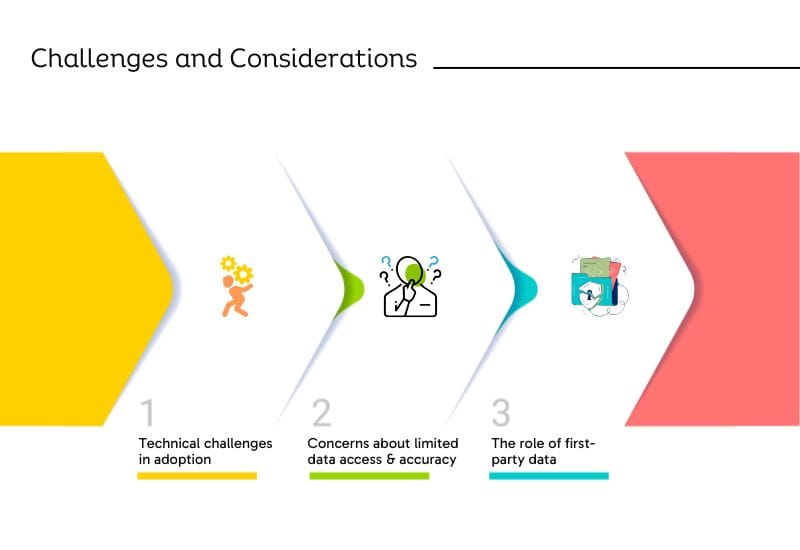Privacy Sandbox on Android: A Complete Guide
Privacy is no longer just an added benefit; it has become a cornerstone of building user trust and fostering sustainable growth. With 3.5 billion gamers projected globally by 2025, the mobile gaming sector remains crucial, with 2.2 billion active mobile gamers driving its growth. However, the landscape is shifting rapidly. This blog looks into the Privacy Sandbox on Android, its key features, objectives, and how you can successfully navigate this new era of privacy-first innovation.
What is the Privacy Sandbox on Android?
The Privacy Sandbox on Android is Google’s forward-thinking initiative designed to address the growing demand for privacy-focused advertising, measurement, and attribution in a mobile-driven world.
It is a multi-year, open-source project to reduce invasive practices like cross-app and cross-site tracking while sustaining the ad-funded ecosystem businesses depend on.
Inspired by the success of the Chrome Privacy Sandbox, which replaced third-party cookies, this initiative extends the vision to mobile platforms by planning the deprecation of the Google Advertising ID (GAID). This marks a significant step toward implementing privacy-first methodologies prioritizing user trust without compromising functionality.
The Privacy Sandbox offers actionable tools to support developers during this transition, including design proposals, developer guides, and API references. These resources ensure the seamless integration of privacy-focused solutions while fostering collaboration across the ecosystem.
Before we delve into the core technologies, it’s essential to understand the primary goals driving this initiative.
What Are the Goals of the Privacy Sandbox?

The Privacy Sandbox on Android has three primary goals:
Enhance user privacy: Develop technologies that safeguard personal information and eliminate current tracking mechanisms like fingerprinting. Users should be able to browse and use apps without worrying about covert data collection or misuse.
Support free online content: Help publishers and developers maintain the ad-funded model without resorting to intrusive tracking methods. Privacy-preserving tools will enable them to deliver relevant content and ads while respecting user privacy.
Foster industry collaboration: Engage the broader ecosystem, including advertisers, publishers, and developers, to create robust privacy standards. By working together, the industry can ensure privacy-first solutions that benefit everyone.
These objectives aim to balance user trust, innovation, and economic growth in a rapidly evolving digital landscape.
Now that we’ve covered the objectives, let’s take a closer look at the features that make this initiative transformative.
Core Features of Privacy Sandbox
Let’s break down the core technologies of the Privacy Sandbox on Android, each designed to transform how you approach ads and user data while enhancing marketing analytics capabilities:
SDK Runtime
Third-party SDKs are integral to app performance but often come with privacy challenges. SDK Runtime ensures these tools can be integrated securely, providing strong privacy safeguards to prevent data misuse.
Topics API
This API helps you understand audience interests while protecting their privacy. Based on recent browsing activity, it assigns high-level categories—like “Travel” or “Fitness”—to topics. These topics inform ad personalization without exposing specific site visits. Users can even view or modify their topics, giving them greater control over their data.
Protected Audience API
Effective retargeting and audience segmentation are crucial for marketing success. The Protected Audience API enables ad targeting for specific user groups without tracking activity across apps. For example, your marketing analytics tools can identify segments likely to convert on a campaign while this API maintains their privacy.
Attribution Reporting API
Measuring ad performance is essential for growth. The Attribution Reporting API lets you understand what works without compromising user privacy.
For instance, if a player clicks an ad for your game and makes a purchase, you’ll know the campaign succeeded without accessing personal browsing details. Techniques like encryption and data aggregation ensure insights are precise and privacy-friendly.
These core features prioritize user privacy and ensure the effectiveness of your marketing efforts. Now, let’s explore how the rollout plan affects key industry players.
To explore the broader implications and potential of mobile attribution in a privacy-first future, read our Google's Privacy Sandbox for Mobile Attribution: Deep Dive into a Private Future.
Implementation and Development Timeline
Transitioning to the Privacy Sandbox on Android involves a phased rollout:
Deprecation of Advertising ID: Google plans to gradually phase out traditional tracking methods, giving you time to adapt.
Developer previews and industry collaboration: Participate in beta programs and provide feedback to shape the ecosystem.
Support for current features: Google’s commitment ensures a smooth transition to new technologies without disrupting your workflows.
This collaborative and measured approach is in contrast to other platforms’ implementations. Let's compare its unique value to Apple’s App Tracking Transparency (ATT) to better understand its unique value.
Comparison with Other Platforms
The Privacy Sandbox on Android takes a fundamentally different approach than Apple’s App Tracking Transparency (ATT) framework. Let’s break it down:
Apple’s ATT is restrictive and abrupt: It requires explicit user consent for any tracking, which caused significant disruption for advertisers and developers. The introduction of SKAdNetwork was a stark change, leaving many scrambling to adapt.
Privacy Sandbox on Android is collaborative and flexible: Google provides a suite of tools, such as Topics API and Attribution Reporting API, to make the transition smoother. These tools allow advertisers to access anonymized insights while ensuring user privacy.
Google Referrer adds unique value: Unlike Apple, Google retains the Google Referrer feature, which tracks the user’s journey from the Play Store to app conversion. This invaluable data helps advertisers gain actionable insights into campaign performance—a capability that iOS lacks entirely.
Google’s Privacy Sandbox on Android ensures privacy without sacrificing innovation or utility. Prioritizing industry collaboration and offering a phased transition strike a balance that benefits both businesses and users.
Challenges and Considerations

While the Privacy Sandbox offers a promising path toward a more privacy-centric mobile ecosystem, several challenges and considerations remain:
Technical challenges in adoption: Integrating and adapting to new APIs and technologies can present technical challenges for developers.
Concerns about limited data access and accuracy: Under the new privacy constraints, some developers may be concerned about potential limitations in data access and the accuracy of advertising targeting.
The role of first-party data: The importance of first-party data, such as user behavior within your own app, will likely increase as reliance on cross-app tracking diminishes.
To address these challenges effectively, proactive preparation is critical. Let’s outline actionable steps you can take to get ready.
Preparing for Privacy Sandbox
Adapting to the Privacy Sandbox on Android may feel like a big shift, but with the right approach, you can make the transition seamless and future-proof your advertising strategies. Here’s how to get started:
Audit and upgrade your tech stack: Examine your current technology stack, including your MMP, CRM, and ad agency tools. The transition to the Privacy Sandbox will significantly change these systems. Familiarize yourself with the new APIs, like the Topics API and Attribution Reporting API, to ensure compatibility and prepare for the changes ahead.
Enroll in the beta program:Joining the Privacy Sandbox beta is your first step toward understanding how it works. The developer enrollment program verifies apps that use APIs, adding an extra layer of data protection. This controlled environment helps minimize data misuse while allowing you to test and refine your strategies. Remember, your enrollment details will be publicly visible, so review the program guidelines thoroughly.
Define and test your use cases: The Privacy Sandbox is still evolving, so now is the time to identify your unique business needs. Design use cases within the sandbox framework and experiment with the APIs to see how they perform. Google’s resources provide valuable insights and examples to guide your testing process.
Collaborate with your MMP: Mobile Measurement Partners (MMPs) are crucial in transitioning to privacy-first advertising. Engage with your MMP to discuss measurement solutions and ensure they actively test the APIs. By working closely with your MMP, you can bridge potential data gaps and avoid last-minute challenges as GAID is phased out.
Educate and align your team: Preparing for the Privacy Sandbox isn’t just about tools—it’s about people. Equip your team with the knowledge and skills they need to adapt. Regular training sessions and clear communication will help your organization navigate the transition more effectively.
By proactively adopting these steps, you’ll ease the transition to the Privacy Sandbox on Android and position your business for long-term success in a privacy-centric ecosystem. The key is to embrace this change as an opportunity to build stronger, trust-based relationships with your users while maintaining the effectiveness of your campaigns.
For detailed steps on how to implement and measure success within the Privacy Sandbox framework, refer to our Google Play Privacy Sandbox Implementation and Measurement Guide.
Conclusion
The Privacy Sandbox on Android aims to enhance user privacy, support ad-funded models, and foster industry collaboration by phasing out invasive tracking methods. Businesses must prepare early by upgrading their tech stack, testing new APIs, and collaborating with Mobile Measurement Partners (MMPs) to adapt seamlessly. This transition strengthens user trust while maintaining effective advertising strategies.
To stay ahead, consider using Segwise. Our AI-driven monitoring, predictive analytics, and creative insights empower you to optimize your campaigns and maximize ROAS. Integrating with top tools like Adjust and Appsflyer allows you to easily navigate privacy changes, maximize ROAS, and drive sustainable growth.
Take the first step toward smarter campaign management with Segwise. Gain actionable insights and boost ROAS with a free 14-day trial—no credit card needed!
Comments
Your comment has been submitted successfully!